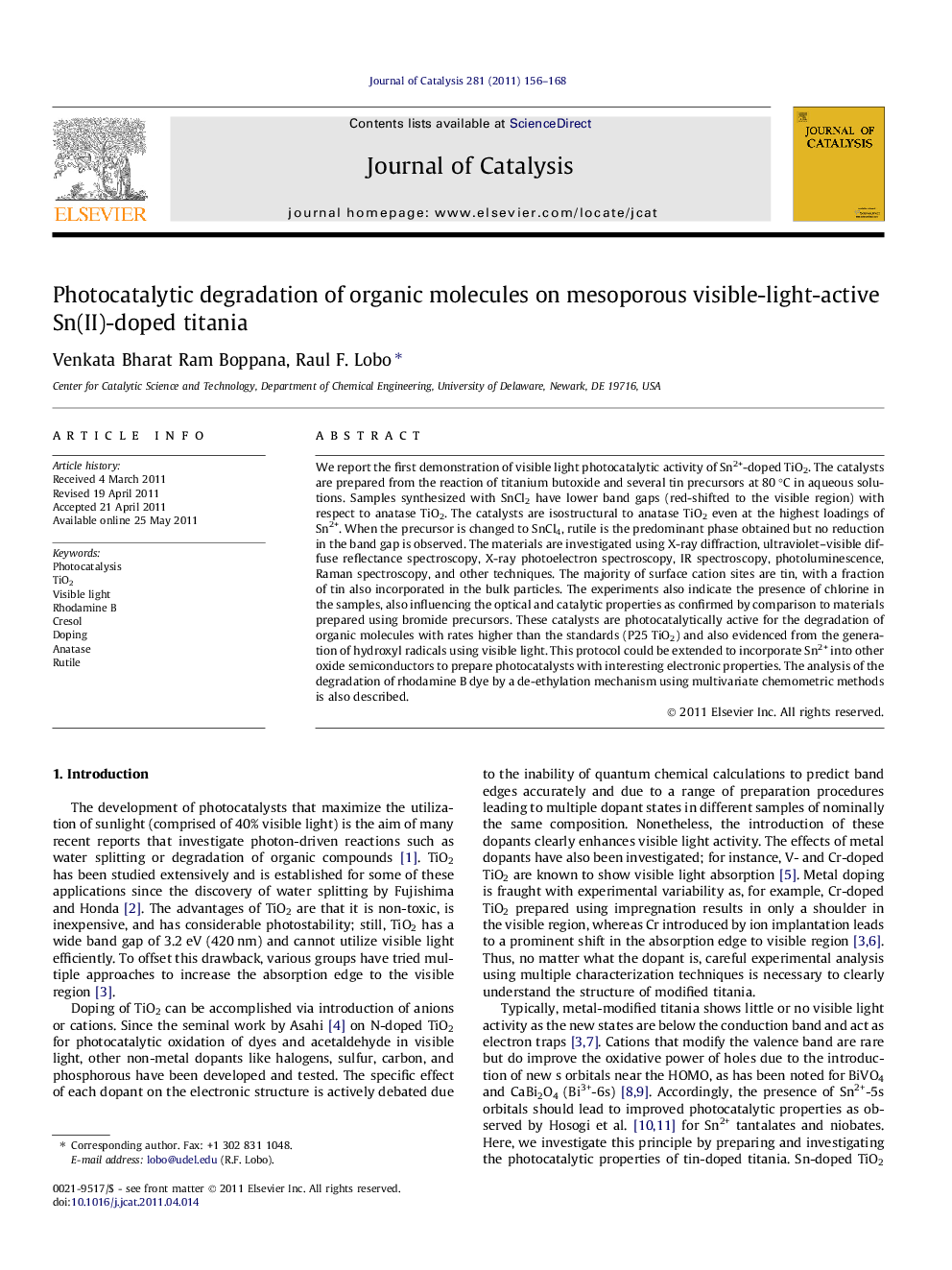| کد مقاله | کد نشریه | سال انتشار | مقاله انگلیسی | نسخه تمام متن |
|---|---|---|---|---|
| 61664 | 47597 | 2011 | 13 صفحه PDF | دانلود رایگان |

We report the first demonstration of visible light photocatalytic activity of Sn2+-doped TiO2. The catalysts are prepared from the reaction of titanium butoxide and several tin precursors at 80 °C in aqueous solutions. Samples synthesized with SnCl2 have lower band gaps (red-shifted to the visible region) with respect to anatase TiO2. The catalysts are isostructural to anatase TiO2 even at the highest loadings of Sn2+. When the precursor is changed to SnCl4, rutile is the predominant phase obtained but no reduction in the band gap is observed. The materials are investigated using X-ray diffraction, ultraviolet–visible diffuse reflectance spectroscopy, X-ray photoelectron spectroscopy, IR spectroscopy, photoluminescence, Raman spectroscopy, and other techniques. The majority of surface cation sites are tin, with a fraction of tin also incorporated in the bulk particles. The experiments also indicate the presence of chlorine in the samples, also influencing the optical and catalytic properties as confirmed by comparison to materials prepared using bromide precursors. These catalysts are photocatalytically active for the degradation of organic molecules with rates higher than the standards (P25 TiO2) and also evidenced from the generation of hydroxyl radicals using visible light. This protocol could be extended to incorporate Sn2+ into other oxide semiconductors to prepare photocatalysts with interesting electronic properties. The analysis of the degradation of rhodamine B dye by a de-ethylation mechanism using multivariate chemometric methods is also described.
Visible-light-active valence band-hybridized Sn(II)–TiO2 materials were synthesized possessing unique electronic properties and photocatalytic activities dependent on the hydrothermal synthesis conditions.Figure optionsDownload high-quality image (40 K)Download as PowerPoint slideHighlights
► Mesoporous Sn(II)–TiO2 photocatalysts synthesized hydrothermally.
► The band gaps decrease to the visible region of the solar spectrum.
► This reduction is associated with the hybridization of Sn 5s with O 2p.
► They are photocatalytically active for the degradation of RhB and cresol.
► Potential applications could be photocatalytic water splitting.
Journal: Journal of Catalysis - Volume 281, Issue 1, 1 July 2011, Pages 156–168